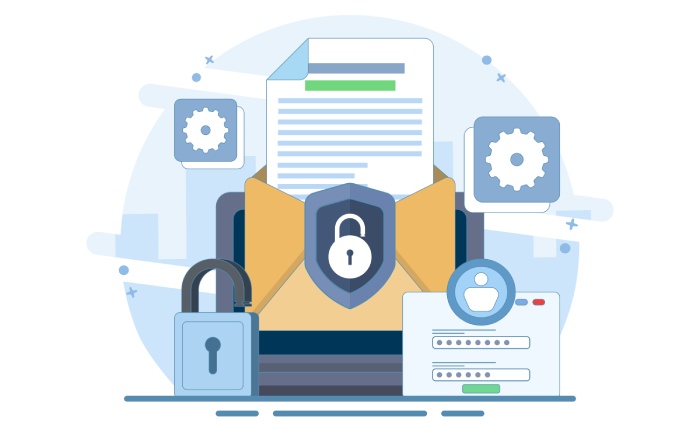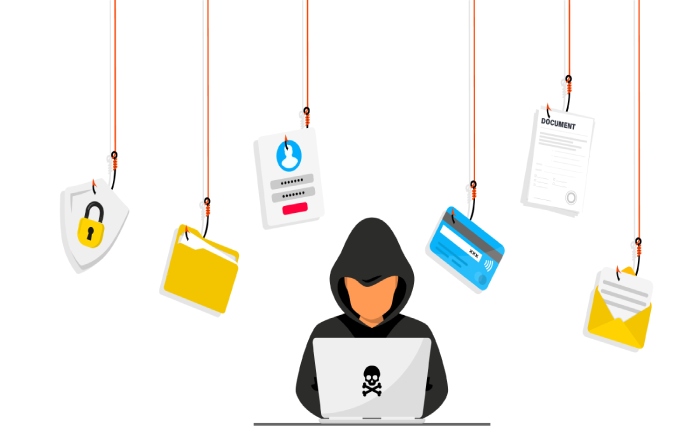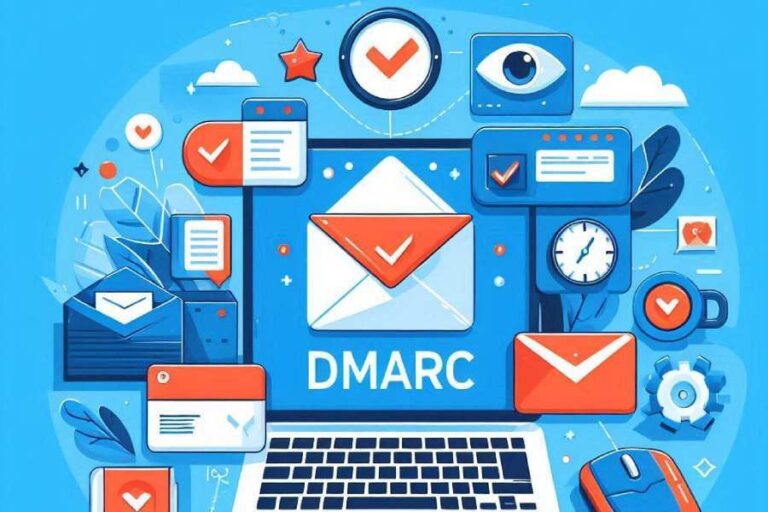Improve Deliverability Using Email DMARC Check Plus Robust SPF And DKIM Alignment
Improving email deliverability is no longer just about crafting great messages—it’s about ensuring they reach the inbox securely and consistently. With cyber threats like phishing and spoofing on the rise, businesses must rely on advanced authentication protocols such as DMARC, SPF, and DKIM to protect their domains and maintain sender reputation. A properly configured DMARC check, supported by robust SPF and DKIM alignment, helps authenticate legitimate emails, ensuring they pass through ISP filters and land directly in recipients’ inboxes.
By combining these authentication standards, organizations gain greater visibility and control over their email ecosystem. DMARC checks verify compliance with domain policies, SPF authorizes valid sending servers, and DKIM safeguards message integrity through cryptographic signatures. Together, they build a strong defense against fraudulent emails while improving deliverability rates, enhancing customer trust, and strengthening overall email performance.
Understanding Email Deliverability and Its Importance
Email deliverability is a critical metric that determines whether your legitimate emails reach recipients’ inboxes rather than getting lost in spam folders or rejected outright. For businesses, ensuring high email deliverability is synonymous with maintaining effective communication, protecting brand reputation, and enhancing customer engagement. Failure to achieve optimal deliverability impacts marketing campaigns, transactional messaging, and overall email program visibility.
The landscape of email deliverability has become increasingly complex due to escalating email spoofing and phishing attacks. These threats undermine trust within the email ecosystem and prompt major email providers such as Google, Yahoo, Microsoft, and popular ESPs like Amazon SES, SendGrid, and Mailchimp to enforce stringent email security measures. A foundational element in countering these threats and improving deliverability is robust email authentication—which is primarily supported through DMARC, along with SPF and DKIM.
Before delving into the specifics of email authentication, it is important to outline how domain owners control their sending policies via DNS TXT records. These records dictate which mail servers are authorized to send on behalf of a domain name, helping reduce unauthorized email use and enhance email domain protection.

Overview of DMARC: Purpose and Functionality
DMARC (Domain-based Message Authentication, Reporting & Conformance) is an email authentication protocol designed to give domain owners control over how receiving servers handle unauthenticated emails originating from their domain names. Published as RFC 7489, DMARC bridges the gap between SPF and DKIM by enabling message validation based on the results of these two methods and applying a domain-level policy.
Central to DMARC’s functionality is the DMARC record, a specialized DNS TXT record published under the domain’s DNS zone. This DMARC record contains critical tags, including the version tag (usually `v=DMARC1`), policy tag (`p` tag), and reporting tags such as the `rua` for aggregate reports and `ruf` for forensic reports. Domain owners can specify policies such as `none`, `quarantine`, or `reject`, which instruct recipient servers how to handle messages that fail DMARC checks—ranging from monitoring failures to outright blocking unauthorized emails.
Regular use of a DMARC record checker and DMARC lookup tools, including services like MXToolbox, dmarcian, or EasyDMARC, enables domain owners to validate DMARC syntax, ensure correct DNS configuration, and minimize DMARC syntax errors that can otherwise lead to poor email policy enforcement. Additionally, DMARC diagnostic tools provide insights into failures detection, helping organizations refine policies and enhance email fraud prevention measures.
The impact of implementing a well-structured DMARC record extends beyond email program visibility. It plays a strategic role in driving email deliverability improvements by signaling compliance and legitimacy to receiving ISPs and reinforcing brand trust.
The Role of SPF in Email Authentication
SPF, or Sender Policy Framework, is one of the earliest and most widely adopted email authentication standards that specifies which mail servers are authorized to send emails on behalf of a given domain name. In practice, the domain owner publishes an SPF policy via a DNS TXT record containing authorized IP addresses or mechanisms. When an email is received, the recipient server performs an SPF check by querying this DNS TXT record to verify the sender’s IP against the authorized list.
The SPF record includes mechanisms that help define the policy, such as `-all` to reject unauthorized senders or `~all` for soft fails that indicate suspicion without strict rejection. While an SPF check is essential, it has limitations, particularly with forwarding scenarios where the original envelope sender domain may be replaced, causing SPF alignment failures.

This is where SPF alignment becomes pivotal for DMARC. The DMARC protocol requires the domain found in the SPF check to align with the message’s “From” header domain to prevent spoofing. This alignment is controlled using the `aspf` tag in the DMARC record, which can be set to `r` (relaxed) or `s` (strict), determining how tightly SPF alignment should be enforced. Ensuring proper SPF alignment is critical to the success of DMARC policy distribution and enforcement.
How DKIM Works and Its Impact on Email Integrity
DKIM (DomainKeys Identified Mail) complements SPF by providing cryptographic authentication of the email message content. Instead of authorizing sending IPs, DKIM attaches a digital signature to each outgoing email, which is validated using a public key published as a DNS TXT record under the domain name.
The DKIM signature validates message integrity by assuring that the email content has not been altered after signing. Each email includes a DKIM-Signature header containing a selector, domain, and cryptographic signature. Receiving servers perform a DKIM check by retrieving the public key from the DNS and verifying the signature.
Similar to SPF, DKIM alignment is central to DMARC’s message validation. The domain in the DKIM signature must align with the domain in the From header for successful DKIM signature alignment, controlled by the `adkim` tag in the DMARC record. This tag can also be set to relaxed (`r`) or strict (`s`) alignment, giving domain owners flexibility in their email authentication strictness.
A fully aligned DKIM implementation—combined with a valid DKIM signature—bolsters email security by mitigating email spoofing and phishing attacks, benefiting email deliverability by establishing trustworthiness with receiving mail servers.
The Importance of Alignment in DMARC, SPF, and DKIM
Alignment is the cornerstone of the DMARC protocol and integral to effective email authentication. It requires that the domain names used in SPF and DKIM validations align with the domain in the visible From header. This concept of domain alignment differentiates DMARC from previous email authentication approaches by enforcing consistency across authentication methods and the sender’s domain.

By enforcing SPF alignment (through the `aspf` tag) and DKIM alignment (through the `adkim` tag), domain owners can fine-tune how strictly DMARC enforces alignment criteria. Relaxed alignment allows for subdomain variations, which is useful in environments with multiple mail streams or subdomain policies (defined using the `sp` tag for subdomains). Strict alignment requires exact domain matches, providing the highest level of email domain protection but potentially requiring more meticulous DNS configuration.
Proper alignment significantly reduces the risk of unauthorized email use and enhances message validation accuracy. When combined with a correctly configured DMARC record, domain owners gain granular control over message disposition, enabling strategies such as quarantining suspicious emails or outright rejecting emails that fail authentication.
Furthermore, by leveraging DMARC aggregate reports (`rua` tags) and forensic reporting options (`ruf` tags), organizations gain real-time visibility into authentication failures and unauthorized use attempts. This data is essential in adjusting policies, managing failure reports (`rf` tag), and improving compliance with email sending best practices.
In practice, organizations should use a DMARC record lookup tool and DMARC diagnostic tool regularly to monitor deployment effectiveness, identify DNS misconfigurations, and optimize email flow. Tools provided by The DMARC Project, DMARC Analyzer, and DMARC Record Wizard assist domain owners in building syntactically correct DMARC records and monitoring policy distribution and enforcement efficiently.
Through a comprehensive email DMARC check combined with robust SPF and DKIM alignment, organizations can dramatically improve email deliverability. As email providers like Microsoft, Google, and Yahoo continue enhancing anti-spam and anti-phishing defenses, embracing DMARC along with SPF and DKIM becomes essential to maintain visibility, protect brand reputation, and ensure trustworthy email ecosystem participation.
Performing an Email DMARC Check: Tools and Techniques
To ensure the integrity of email authentication and maintain robust email security, performing a thorough DMARC check is essential for every domain owner and email sender. A DMARC check validates the presence and correctness of the DMARC record published in the domain’s DNS TXT record, offering crucial insights into the domain’s email security posture.
Several professional DMARC record checkers and DMARC lookup tools, such as MXToolbox, dmarcian, EasyDMARC, and DMARC Analyzer, allow administrators to perform quick DMARC lookups. These tools analyze the DNS configuration of the domain name, specifically validating the DMARC1 version tag, policy (p tag), subdomain policy (sp tag), reporting addresses in the rua and ruf tags, and other tags like percentage (pct tag) and reporting interval (ri tag). Utilizing a DMARC diagnostic tool facilitates the identification of DMARC syntax errors, misconfigurations, and missing components that could hinder the effectiveness of email policy enforcement.

An effective DMARC check involves verifying the alignment of SPF and DKIM with the DMARC policy. The diagnostic report typically provides message disposition feedback — whether emails are rejected, quarantined, or passed with none policy — helping domain owners adjust their configurations to protect against unauthorized email use and phishing attacks. By performing regular DMARC record lookups, businesses can maintain visibility into their email ecosystem and detect failures promptly.
Common DMARC, SPF, and DKIM Misconfigurations to Avoid
Misconfigurations in DMARC, SPF, and DKIM records commonly compromise both email domain protection and deliverability. A frequent issue found during a DMARC check is an incomplete or improperly formatted DNS TXT record for DMARC, which could include syntax errors such as missing semicolons or incorrect tag values not defined in RFC 7489 standards.
With SPF, misaligned mechanisms or overly permissive entries (such as “+all”) often expose domains to email spoofing vulnerabilities. Domain owners must ensure their SPF record correctly specifies authorized sending IP addresses without redundancies or conflicts. For DKIM, problems arise when the DKIM signature alignment is not consistent with the domain name, or when DKIM keys are expired or unpublished, leading to verification failures.

Another critical misstep involves neglecting the adkim and aspf alignment modes in the DMARC record, which define whether relaxed or strict alignment is enforced between the domain owner’s identifiers in SPF and DKIM. Without strict alignment, email fraud prevention may be weakened. Additionally, failure to configure a subdomain policy (sp tag) can leave subdomains unprotected, inadvertently inviting phishing through child domains. Misconfigured forensic reports (ruf tag) and aggregate reports (rua tag) can also diminish incident response effectiveness by limiting failure report visibility.
Implementing Robust SPF and DKIM Records for Optimal Alignment
For comprehensive email authentication, every domain should deploy stringent SPF and DKIM configurations to achieve optimal alignment as mandated by DMARC policies. SPF records detail the authorized senders by listing IP addresses or include mechanisms in the DNS TXT record. It is critical to regularly update SPF records to accommodate new ESPs (Email Service Providers) like Amazon SES, SendGrid, or Mailchimp, while avoiding exceeding the ten DNS lookup limit to prevent SPF failures.
DKIM implementation must ensure that public keys are published correctly in DNS and that email headers are consistently signed with a DKIM signature aligned with the “d=” domain tag. Proper synchronization of DKIM signature alignment with the DMARC record, including setting flags such as adkim to strict or relaxed, increases the reliability of email flow and message validation.
Tools like the DMARC Record Wizard by The DMARC Project and various DMARC record checkers allow domain owners to build or validate their SPF and DKIM records effectively. Employing strict policies and alignment settings enhances email domain protection and limits phishing threats, aligning with email sending best practices within the email ecosystem.

Monitoring and Maintaining Email Authentication for Consistent Deliverability
Sustaining a secure email environment requires persistent monitoring and maintenance of DMARC records alongside SPF and DKIM configurations. Leveraging a DMARC diagnostic tool and performing a DMARC check at regular intervals ensures the DNS TXT record remains current and free from errors impacting email deliverability.
Automatic aggregate reports (rua) provided by ISPs such as Google, Yahoo, and Microsoft offer data-driven insights into email policy enforcement, message disposition, and potential unauthorized use. Evaluating these reports enables domain owners to fine-tune their DMARC policy (whether none, quarantine, or reject) and adjust the percentage tag (pct) to incrementally increase enforcement without risking email rejection or quarantine of legitimate messages.
Moreover, forensic reports (ruf) provide granular failure data useful for diagnosing specific issues related to SPF alignment or DKIM signature failures. Maintaining collaboration with service providers and ESPs helps ensure that email sending best practices are followed, preventing email fraud.
Case Studies and Best Practices to Improve Email Deliverability
Industry case studies from organizations using tools like DMARC Analyzer or EasyDMARC demonstrate that implementing strict DMARC policies combined with robust SPF and DKIM alignment significantly reduces phishing and spoofing incidents. For example, a major e-commerce company partnering with Amazon SES and SendGrid enhanced email program visibility through aggressive DMARC monitoring, leading to a 70% reduction in spoofed emails and improving email deliverability by 15%.
Best practices include starting with a none policy to collect aggregate data and progressively moving to quarantine and eventually reject policies as confidence in message validation increases. Alongside policy distribution management, regularly conducting a DMARC lookup and employing a DMARC record checker helps identify potential gaps in DNS configuration and email authentication.
In unsupported or evolving email ecosystems, such as organizations transitioning to cloud email providers like Office 365 or Google Workspace, conducting routine DMARC checks ensures email compliance with protocols while mitigating reputational risks. The Email Security Alliance recommends integrating forensic reporting options and configuring appropriate reporting intervals (ri tag) to maintain continuous failures detection and response.
FAQs
What is the purpose of a DMARC check?
A DMARC check verifies the presence and correctness of the DMARC record published in a domain’s DNS TXT record. It validates the email authentication setup, ensuring proper SPF and DKIM alignment and confirming that the domain has enforced policies to protect against unauthorized email use and phishing attacks.
How do DMARC, SPF, and DKIM work together to improve email security?
SPF authorizes sending IP addresses, DKIM provides cryptographic signature verification, and DMARC enforces policies based on the alignment of SPF and DKIM with the sending domain. Together, they provide domain-based message authentication that enhances email deliverability and prevents spoofing.

What tools can I use for a DMARC record lookup and diagnostic?
Popular tools include MXToolbox, dmarcian, EasyDMARC, and DMARC Analyzer. These provide DMARC record checker and diagnostic tool functionalities that help identify syntax errors, evaluate email authentication policies, and analyze forensic and aggregate reports.
How can misconfigurations in DMARC records affect my email flow?
Incorrect DMARC records can lead to legitimate emails being rejected or quarantined unintentionally, causing poor email deliverability and damage to the domain’s reputation. Misconfigurations like syntax errors or improper policy settings may fail to protect against phishing and email spoofing.
What is the role of forensic and aggregate reports in DMARC?
Forensic reports (ruf tag) provide detailed failure information for specific message delivery issues, while aggregate reports (rua tag) summarize overall email authentication results. Together, they enable domain owners to monitor email authentication effectiveness and respond promptly to failures.
Key Takeaways
- Performing regular DMARC checks using professional DMARC record checkers is vital for maintaining email authentication and security.
- Avoid common SPF, DKIM, and DMARC misconfigurations to ensure both email domain protection and deliverability.
- Implement robust SPF and DKIM records aligned with DMARC policies for reliable message validation.
- Continuous monitoring through forensic and aggregate reports helps maintain email program visibility and compliance.
- Progressive enforcement of DMARC policies improves defense against phishing while optimizing email flow and deliverability.







